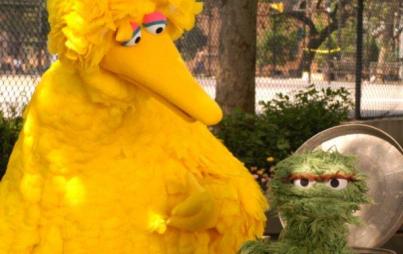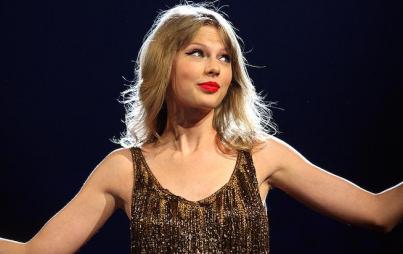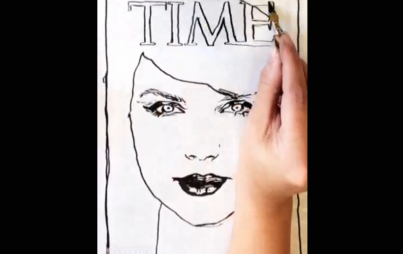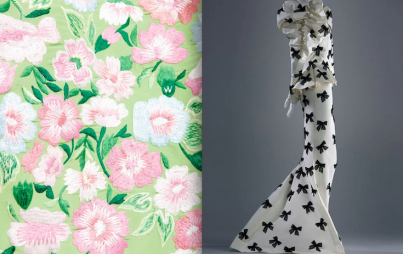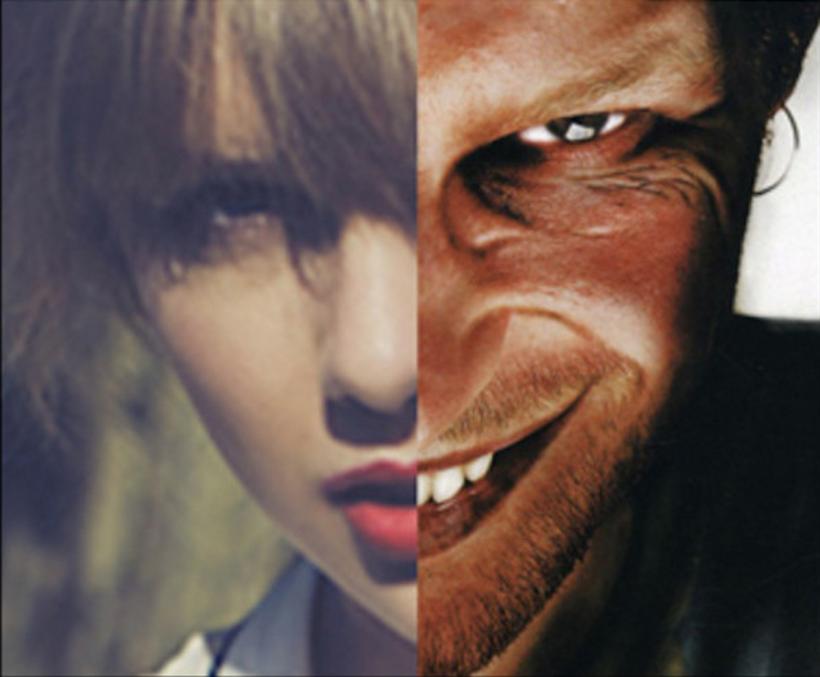
Aphexswift—the brainchild of controversial, acclaimed Get Your War On cartoonist and humorist David Rees—mashes up the pop ditties of Taylor Swift with the electronic compositions of indie darling Aphex Twin. And it's brilliant precisely because it's so unlikely.
Taylor Swift defines shallow prefab airheaded radio pop. Aphex Twin defines idiosyncratic indie underground genius. Or, to put it another way, Taylor Swift is stereotypically femme girly girl music for girls; Aphex Twin is stereotypically brilliant guy music for serious music guys. Put them together and you get giddy pop indie genre gender confusion.
This is epitomized by Rees' disturbing cover mash-up, in which half of Swift's face and half of Richard D. James' face are smooshed together into a single Jekyll and Hyde image, the perfect mannikin image morphing into horror film leer. The best part? If you look at it long enough, it's not clear which side is the manikin and which side is the horror film. Swift's too-intense gaze looks disturbingly like a threat. For its part, James' giant grin seems like an overly ingratiating airbrushed come on. Who's the scary alterna-genius again, and who's the prefab pop star? And what gender is the amalgam, anyway?
This gleeful, unsettling confusion extends to the music as well—not least because that music, after a listen or two, doesn't really sound confusing at all. Swift, as it turns out, makes perfect sense as a jittery, left field indie artist, setting her cutesy, independent girl anthems against ironically sincere or sincerely ironic distorted bizarre soundscapes. When she tells her ex on "We Are Never Ever Getting Girl/Boygether" that he's listening to some indie record that's much cooler than hers, the sneer only takes on extra layers when it's juxtaposed with her crazed, skittering beats and unorthodox, robotic song structure.
And on the other hand, Richard D. James seems like he was always meant to sing nostalgic, lyrical paens to crappy radio country as on "To Cure a Weakling McGraw," where the autotuned nasal whine on "bittersweet" rises up over the sparse plangent keyboard and its echoey spaces. When the male vocalist comes in on harmony, you can imagine it as Richard D. James himself, revealing an unaccountable passion for McGraw and the guy who loves him. Who's in that little black dress, and whose head is on whose chest?
Rees told me that he was interested in the project in part because of the obvious differences between the two artists, but also because of their not-quite-as-obvious similarities. "I agree that Taylor Swift and Aphex Twin are both kind of 'gendered' artists—I associate TS with teenage girls and AT with dudes," he told me. "But," he added, "they're both really romantic composers—they like hooks and emotional moments. One of the points of this mashup project was to celebrate their similarities, and to take them both seriously on their own terms while making something new using their respective strengths."
Rees also told me that "AT fans definitely seemed more offended/annoyed than TS fans. There were a lot of comments like, 'I can't believe this guy has degraded the almighty Richard D. James with this teeny-bopper singer' (paraphrasing)." That makes sense: Taylor Swift is considered to be disposable crap; Aphex Twin is supposed to be a genius. Aphex Twin fan resistance fits neatly into the cultural mindset whereby everybody assumes that Björk doesn't make her own music , or that Beyoncé is just a front for some producer or other.
Rees has done to James what folks always claim the music industry is doing to Swift; using him (or her) as a manipulated, non-autonomous special effect in someone else's vision. Aphex Twin is feminized—and as Rees told me, "I understand being protective of the culture you love, but that sense of ownership can have a nasty edge to it, especially when you're worried about the 'feminization' of the things you're into as a guy."
Rees is using Swift as an effect too, of course. But putting her next to Aphex Twin also highlights, and accentuates, the extent to which her original vision is, in fact, an original vision. Among other things, Aphexswift makes it clear how thoroughly Swift and James share the same white candy-coated ominously effervescent pop tradition going back through the Carpenters to Brian Wilson and the Beach Boys. As Rees says, AT and Swift are both romantic, but they're also both deliberately artificial in their authenticity; constructed empty melancholy machines. "Why you gotta be so mean?" Swift declares on "Why You Gotta Be So Film," her voice turning into a robotic chant at the end of an incongruously cheerful description of a litany of abuse and pain.
"For all her blinding smiles and Subway commercials and wholesome concerts," Rees wrote in his description of the project, "I do think there's a dark side to Taylor Swift. She is what happens when Skynet becomes self-aware."
Which of course raises the question: Is Skynet a genius? And does the answer to that question depend on whether Skynet is male or female? David Rees posits a world in which girly odes to self-empowerment are perpetuated by frightening anarchic female geniuses, and romantic nostalgic pap is promulgated by manufactured radio-ready hipsters. And maybe, Aphexswift suggests, that's the world we live in now.

